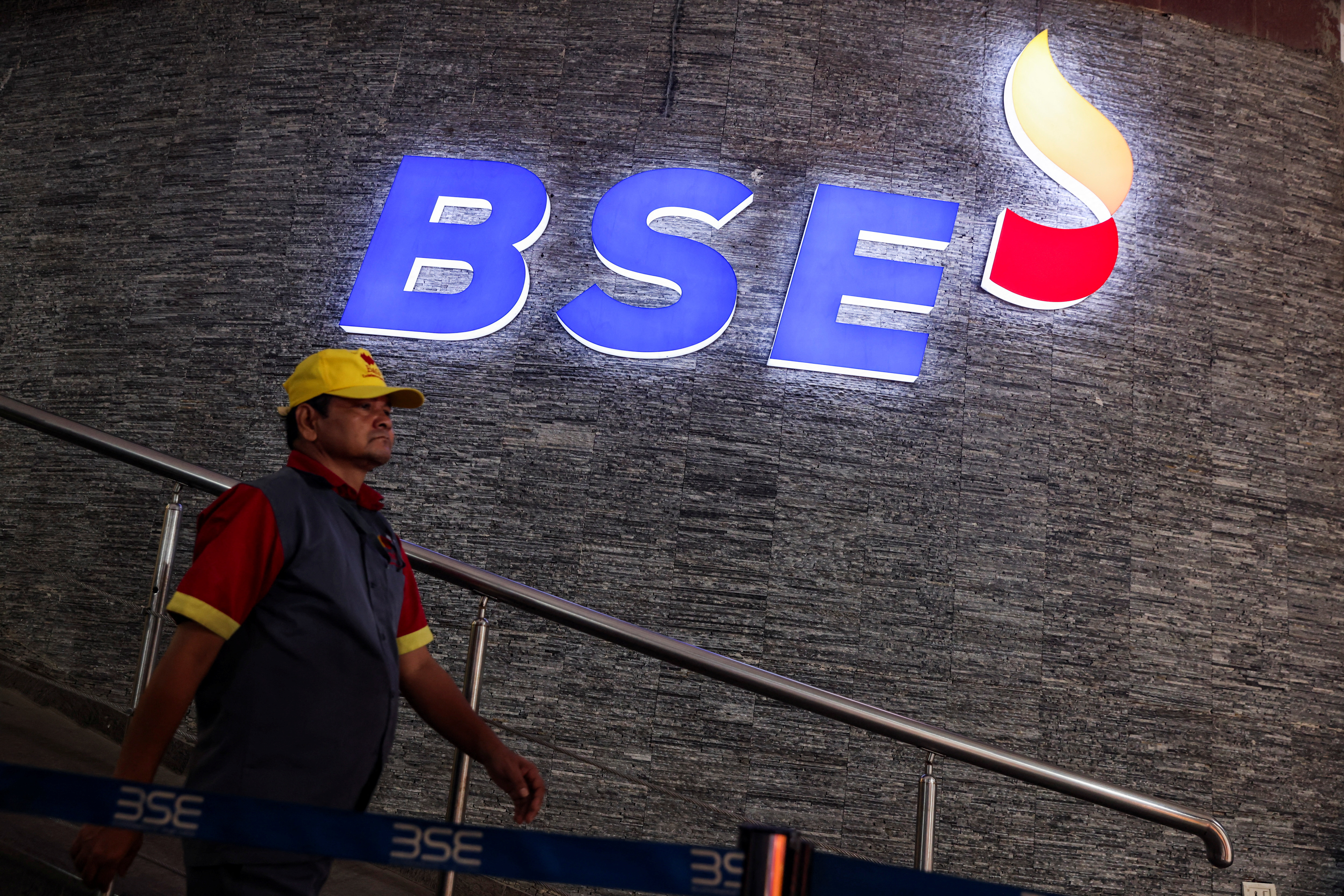A man walks past the new logo of the Bombay Stock Exchange (BSE) building in Mumbai, India, July 12, 2023. REUTERS/Francis Mascarenhas/File photo Acquire Licensing Rights
BENGALURU, Oct 27 (Reuters) – India’s blue-chip stocks rose on Friday after logging losses for the past six sessions, after U.S. treasury yields retreated following weaker-than-expected inflation data, easing some rate-related worries.
The NSE Nifty 50 index (.NSEI) was up 0.85% at 19,016.85 as of 10:04 a.m. IST, while the S&P BSE Sensex (.BSESN) rose 0.86% to 63,692.09.
All the 13 major sectors logged gains. Forty six of the Nifty 50 stocks rose.
The more domestically focused small- (.NIFSMCP100) and mid-caps (.NIFMDCP100) added 2% and 1.5%, respectively.
The rise in domestic equities comes after a six-day losing streak, in which the benchmarks lost nearly 5% and slumped to near four-month highs.
“The correction in stock prices of small- and mid-caps over the last week is still puny compared to the rally over past six to seven months,” said analysts at Kotak Institutional Equities, adding “large-caps offered between risk-reward balance in comparison”.
Small-caps have lost nearly 5% in last four sessions, while mid-caps shed over 6% in the previous six sessions. However they have gained 30% and 23% in 2023 so far, outperforming Nifty 50 which has risen 5%.
U.S. treasury yields retreated on data showing cooling inflation. Elevated U.S. yields, which triggered foreign selling, and the Middle East conflict had weighed on Indian equities over the last two weeks.
“Valuation adjustment is underway in Indian shares, prompted by foreign selling,” said Anita Gandhi, director and head at Arihant Capital, terming the correction “healthy after the sharp uptick.”
“The Nifty 50 is likely to find support near 18,600-18,800 levels and resistance at 19,100-19,200 levels over the next few sessions,” Gandhi added.
Rice exporters like Chaman Lal Setia, LT Foods, KRBL gained between 2% and 4%, after Reuters reported that government cut the floor price for basmati rice exports to $950 per metric ton from $1,200.
Reporting by Bharath Rajeswaran in Bengaluru; Editing by Sohini Goswami and Nivedita Bhattacharjee
Our Standards: The Thomson Reuters Trust Principles.
Credit: Source link




